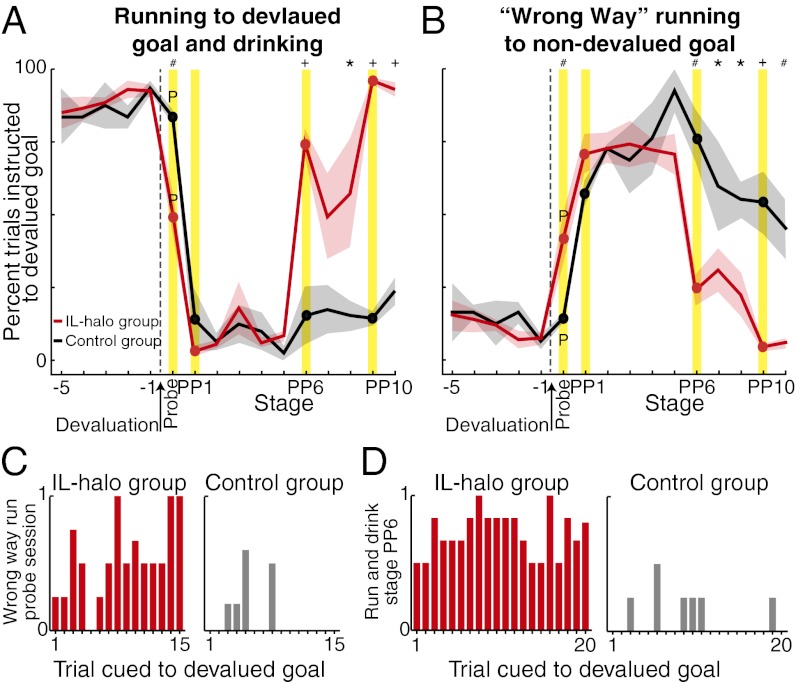Fig. 4.
IL perturbation reinstates original habit and simultaneously breaks replacement habit. (A) Percentage of trials in which rats instructed to run to the devalued goal went there correctly and also drank the reward (IL-halo group, red; control group, black; see Fig. 5 for runs and drinks separately). Shown are five sessions leading up to reward devaluation, the unrewarded probe session (only correct runs shown), and the postdevaluation stages [PP1 initial light-on session(s) or first postprobe session for controls; PP2–PP5 and PP7–PP8: sessions without light; PP6: light-on session or equivalent for control; PP9: light-on session(s); PP10: final session(s) without light]. *P < 0.05; #P < 0.01, +P < 0.001 between groups within stage; differences lacking symbols indicate not significantly different. (B) Percentage of wrong-way runs to nondevalued goal. (C) Trial-by-trial plot for the IL-halo group and control group, in which rats ran the wrong way during probe session (i.e., habit blockade). For each trial, wrong-way run was scored “1,” and correct run was scored “0,” and then scores were averaged (e.g., “0.5”: half of rats ran the wrong way and half ran correctly; “1”: all rats ran the wrong way). (D) Trial plot for IL-halo and control groups, in which rats ran to the devalued reward when instructed and drank it, during stage PP6 (i.e., habit reinstatement).

